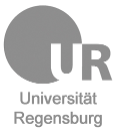Mobility and kinship in the installation rituals of the Emar priestesses
DOI:
https://doi.org/10.35305/cl.vi23.153Keywords:
Mobility, Kinship, Pilgrimage, Status, EmarAbstract
The discovery of a series of Akkadian language tablets in the 1970s has led to an awareness of two religious rituals related to the installation of religious authorities in the city of Emar, in the north of present-day Syria. In the tablets Emar 369 and Emar 370, we find descriptions of the installation rituals for the NIN.DINGIR and maš’artu priestesses of the temple of the storm god. The parallels between these rituals are many; in particular, both have a strong emphasis on the mobility of the future priestesses, who throughout the ritual move continuously between their family homes and the temples. Considering that the nature of this mobility has not been as of yet thoroughly explored, the present work aims to analyse the rituals together to understand the role of religious mobility in shaping the social relations of the kingdom, focusing on how it transforms the status of the people involved and how it reaffirms the existing social order while simultaneously altering social relations among subjects (particularly regarding how it affects parental bonds) and with the deities. We also revisit the hypotheses proposed by Daniel E. Fleming and Daniel Arnaud relating to the communal nature of the rite as independent from and preceding the state structure.
Downloads
References
Archi, Alfonso (2001) “Text Forms and Levels of Comparison: The Rituals of Emar and the Syrian Tradition”, en: Richter, T.; Prechel, D. y Klinger, J. (eds.), Kulturgeschichten: Altorientalistische Studien für Volkert Haas zum 65. Geburtstag. Saarbrücken: Saarbrücker Druckerei und Verlag, pp. 19-28.
Arnaud, Daniel (1995) “La religión de los sirios del Éufrates medio siglos XIV-XII a.C.”, en: del Olmo Lete, G. (ed.), Mitología y Religión de Oriente Antiguo II/2 Semitas Occidentales. Sabadell: AUSA, pp. 5-43
Belmonte Marín, Juan Antonio (2004) “El espacio urbano de Emar según la documentación cuneiforme”, Huelva Arqueológica 19: 207-232.
Coleman, Simon y Eade, John (2004) Reframing Pilgrimage: Cultures in Motion. London: Routledge.
Fleming, Daniel (1992) The Installation of Baal's High Priestess at Emar: A Window on Ancient Syrian Religion. Atlanta: Scholars Press.
Hidalgo Moreno, M. Dolores (1995) “Nuevas categorías de oficiantes en el corpus de rituales de Emar”, Scripta Fulgentina: revista de teología y humanidades 5 (9-10): 87-92.
Justel Vicente, Josué Javier (2007) La posición social de la mujer en la Siria del Bronce Final. Tesis de Doctorado, Universidad de Zaragoza.
Morinis, Alan (1992) “Introduction”, en: Morinis, A. (ed.), Sacred Journeys: The Anthropology of Pilgrimage. Westport/London: Greenwood Press.
Schwemer, Daniel (2008) “The Storm-Gods of the Ancient Near East: Summary, Synthesis, Recent Studies. Part II”, Journal of Ancient Near Eastern Religions 8 (1): 1-44.
Solans, Bárbara E. (2014) Poderes colectivos en la Siria del Bronce Final. Barcelona: Barcelona: Publicacions i Edicions de la Universitat de Barcelona.
Wendrich, Willeke y Barnard, Hans (2008) “The Archaeology of Mobility: Definitions and Research Approaches”, in: Barnard, H. y Wendrich, W. (eds.), The Archaeology of Mobility. Old World and New World Nomadism. Los Angeles: Cotsen Institute of Archaeology, University of California, pp. 1-16.
Downloads
Published
How to Cite
Issue
Section
License

This work is licensed under a Creative Commons Attribution-NonCommercial-ShareAlike 4.0 International License.

















 Centro de Estudios sobre Diversidad Cultural
Centro de Estudios sobre Diversidad Cultural

